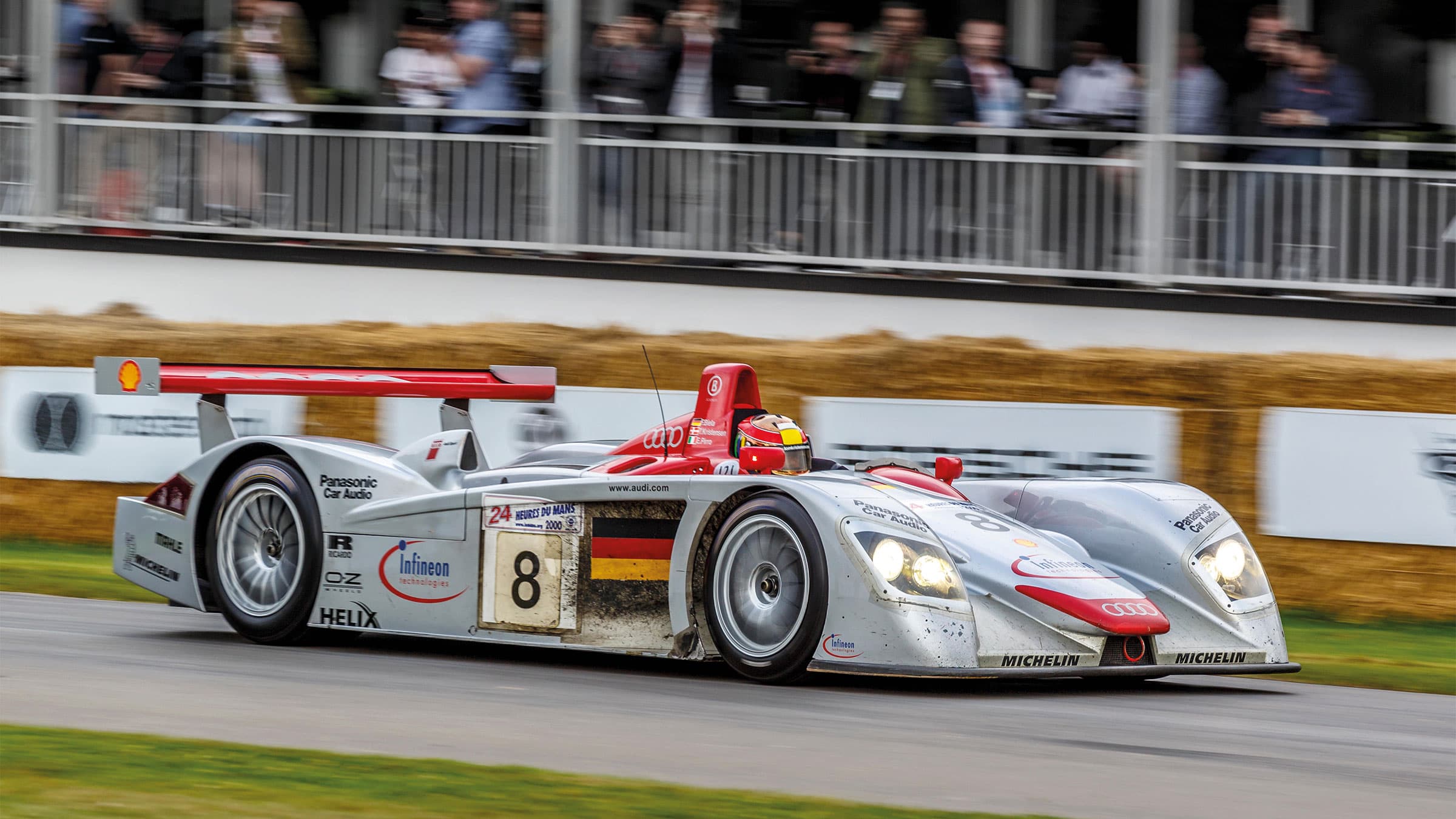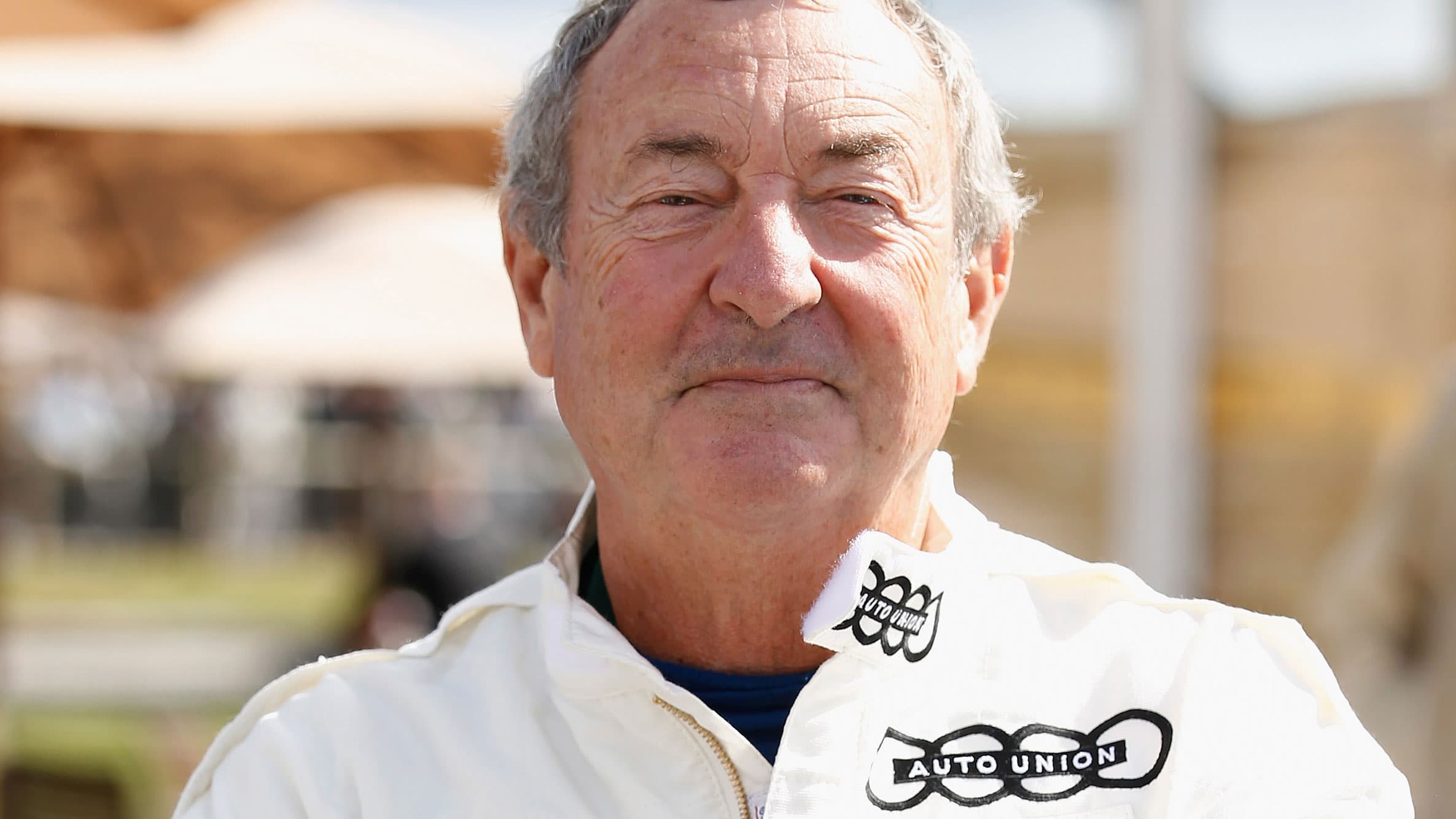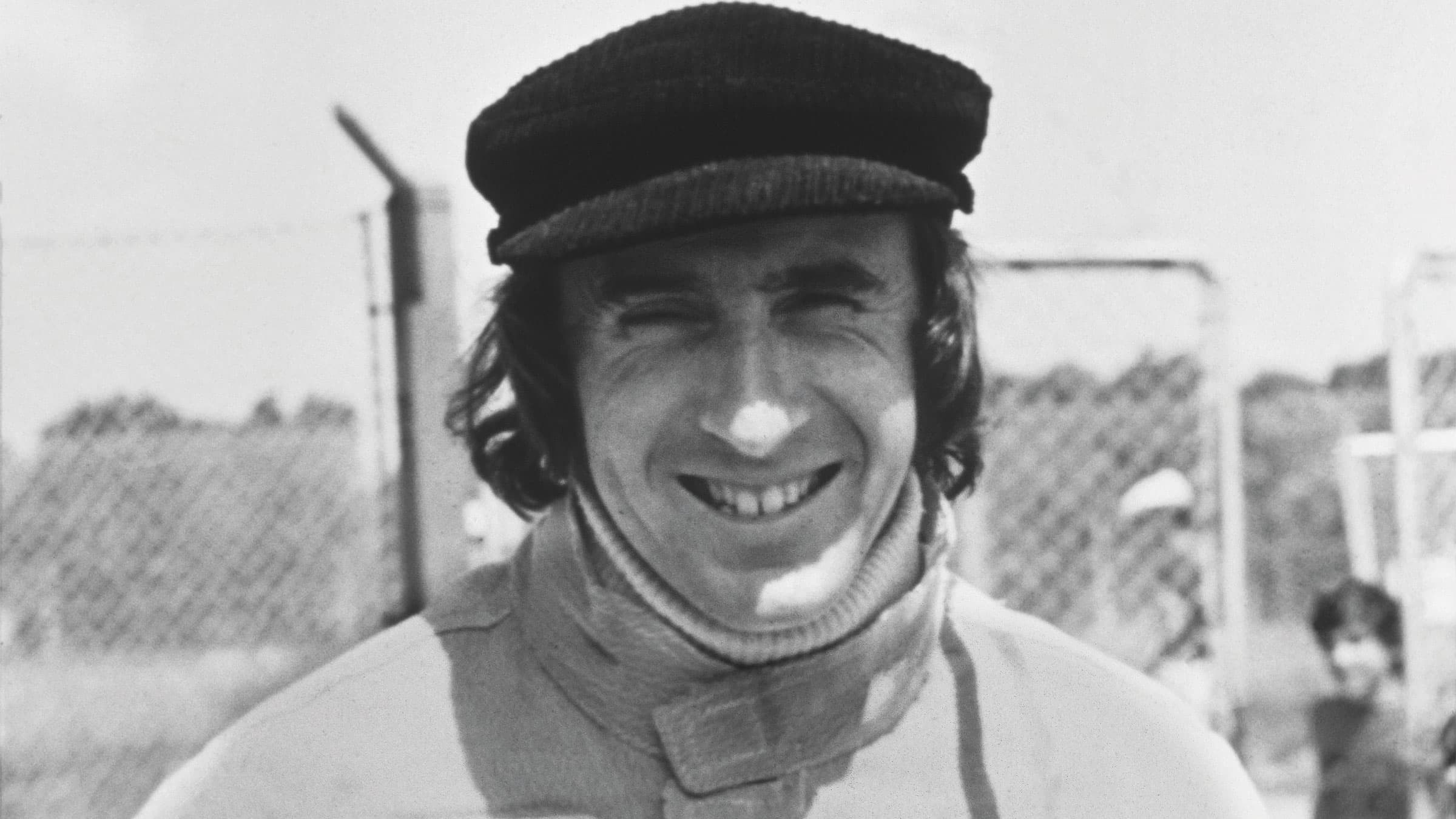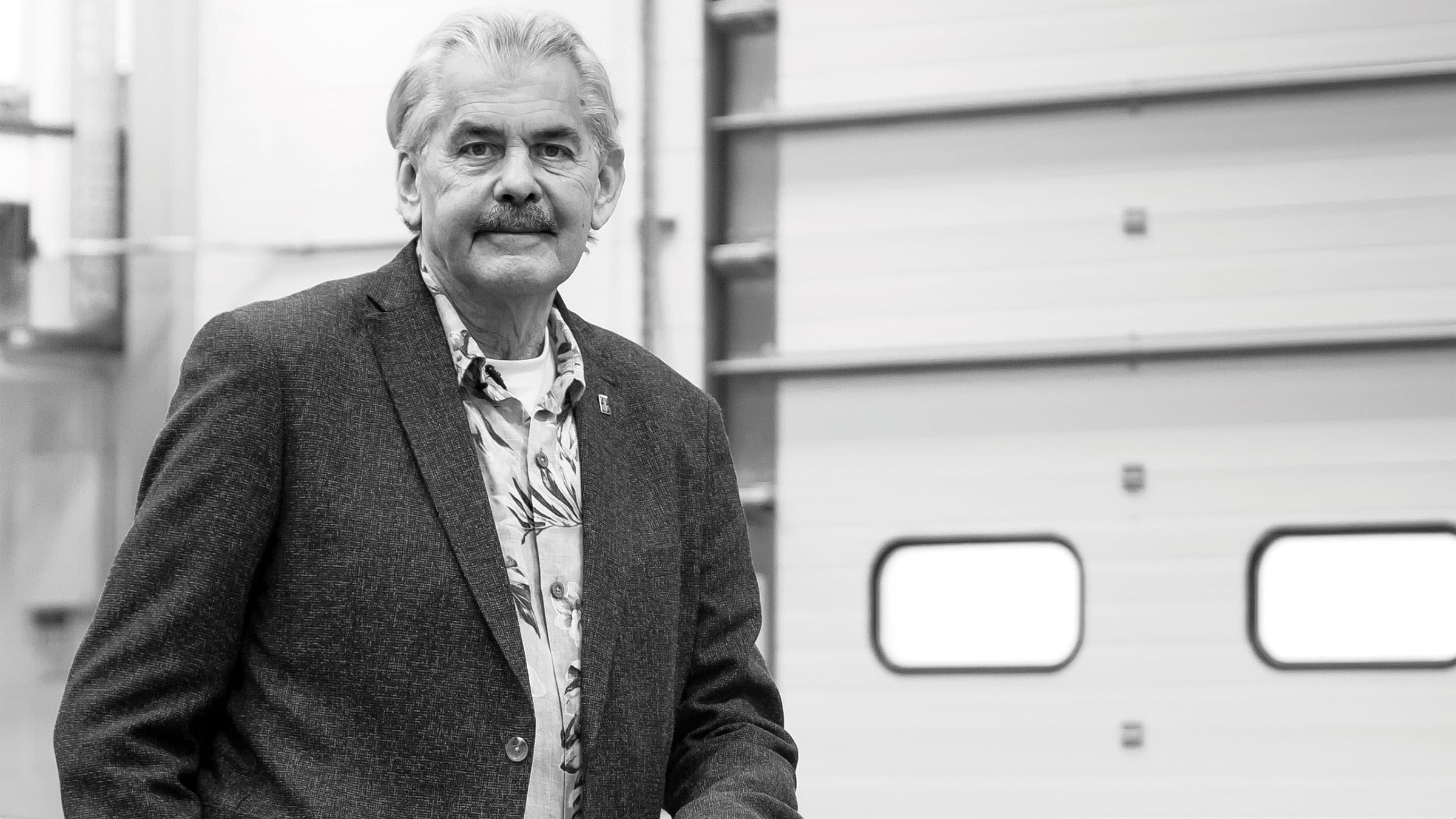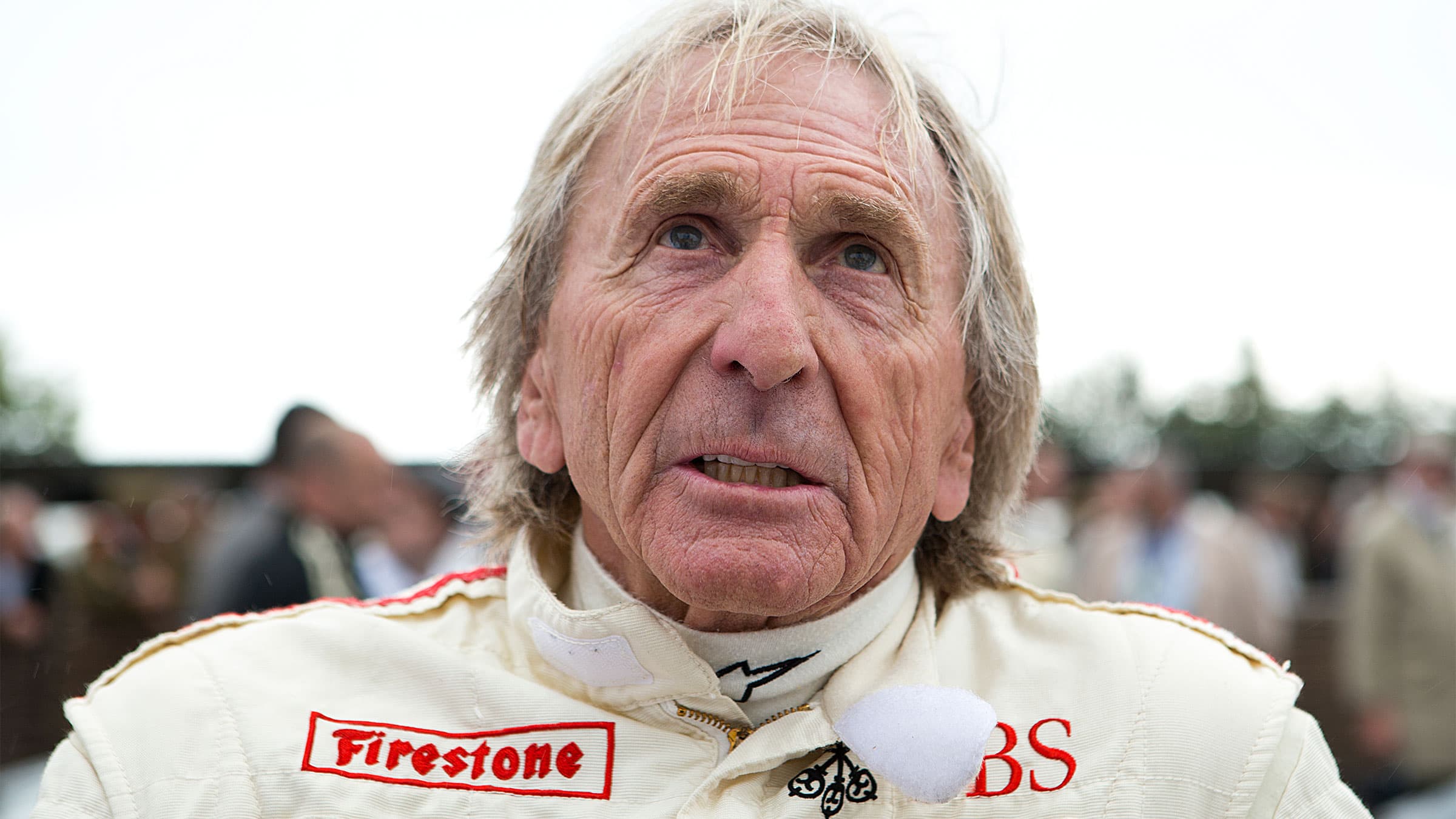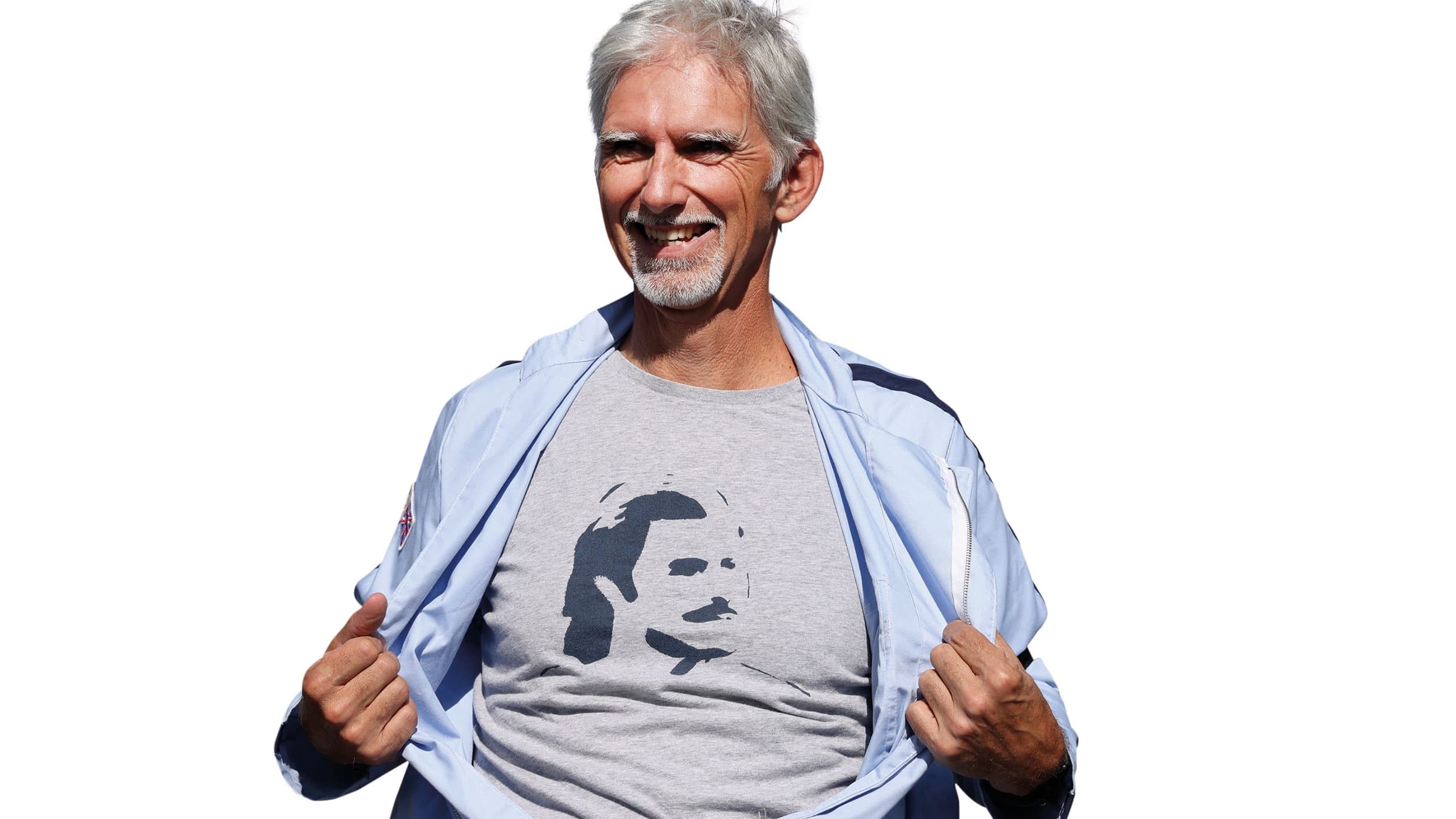Why racing greats keep coming back to Goodwood
Today, Goodwood’s trio of annual motor sport extravaganzas are a honeypot for racing heroes. Here, some of the most decorated drivers tell Rob Widdows what Goodwood means to them and why it’s such a special place

Tom Kristensen
Having won Le Mans nine times, the Great Dane headed for historics, becoming a crowd favourite at the Goodwood Revival where, in 2011, he won the Tourist Trophy race sharing a Shelby Cobra Daytona Coupé with Kenny Brack. Sliding the Cobra through pouring rain Kristensen showed us his huge natural talent. “I love the Revival, the cars, the dressing up, the incredible atmosphere,” he says. “That’s why I keep going back to Goodwood.”
In 2017, the Festival of Speed celebrated the 20th anniversary of his first win at Le Mans when, at the last minute, he was drafted into the Joest team to drive their TWR Porsche WSC-95 alongside Michele Alboreto and Stefan Johansson. They won by a lap, beating the works teams from Porsche, BMW and Nissan, and Kristensen put in the fastest lap.
Gathered in the paddock was a collection of cars that he’d driven as well as many of his Audi team-mates. “I drove the R8 from 2000 up the hill,” says Tom. “That was special for me. That was my first year with Audi and my first win for the team. Allan McNish drove the sister R8 on the hill and it was a very happy celebration. That’s what Goodwood does so well, bringing so many people together, reuniting us with the cars we raced.”
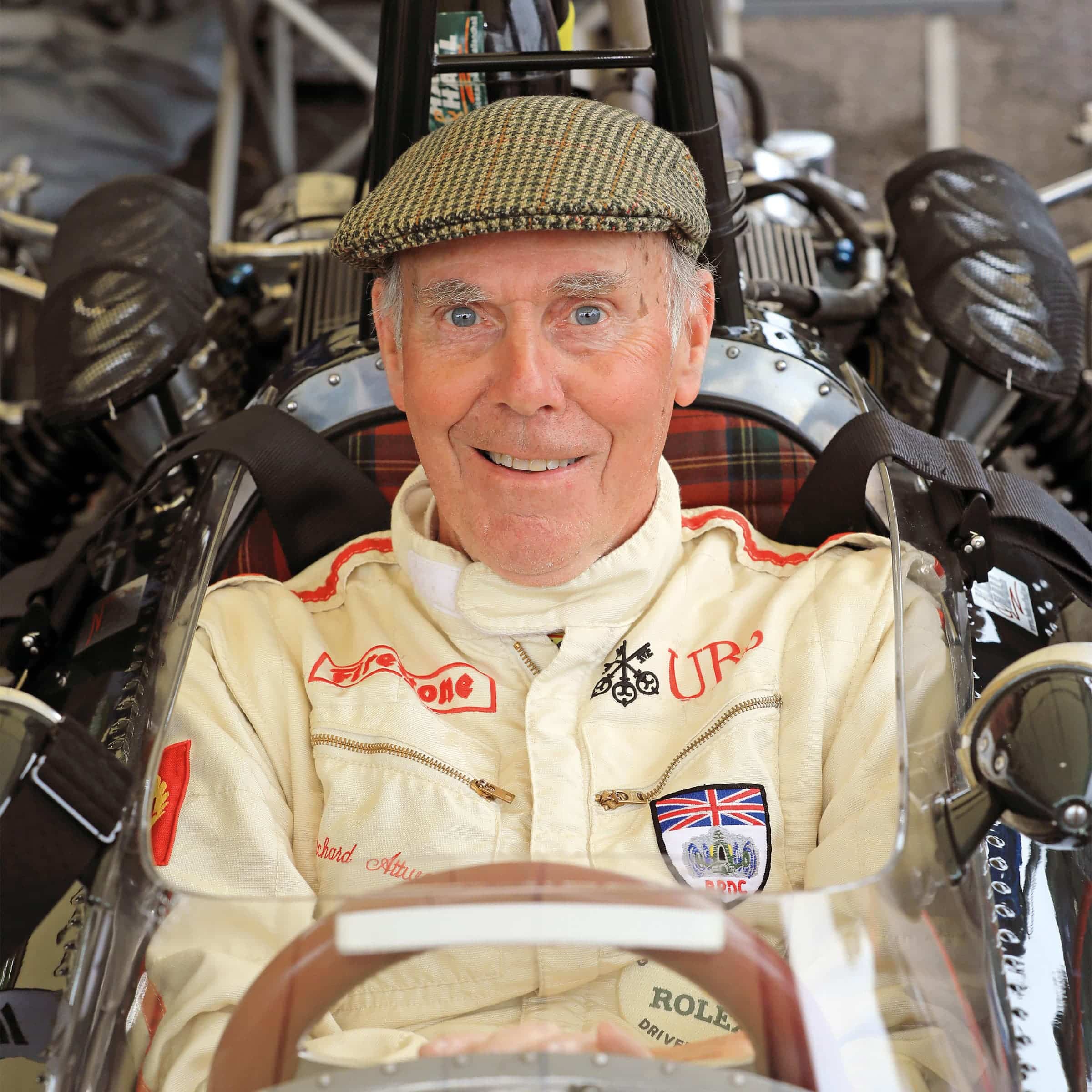
For Richard Attwood, Goodwood has magical qualities and he’s remains a regular at the track
Richard Attwood
Richard Attwood raced at Goodwood in period and is still racing there today. It was also where he had his first experience of driving on a circuit, passing a ‘competence’ test that allowed him to race.
“My first race was at Goodwood at the Members’ Meeting in April 1959, in my Standard 10. Goodwood is so neat, different from all other circuits, like Mallory or Brands, and it’s the most challenging track of them all. That was part of the attraction for me. Goodwood had something magical, a real driver’s track, and it still has that magic today. My father had taken me to races there as a boy, so maybe that was also part of the attraction for me when I started out. I won my first Goodwood race, in a Formula Junior Cooper, in 1961.”
The Easter meeting in 1964 was his first Formula 1 race with BRM, coming fourth in the old ‘stack pipe’ car. This was when he became aware of the Duke of Richmond who invited all the Formula 1 drivers for a drinks reception at Goodwood House, a gesture that topped anything else at other race meetings.
“Most of us had never been to the house before. I remember a big grand piano in the room, a wonderful setting, very special. Graham Hill was there of course, BRM’s number one driver, and he was at the centre of it all as ever. I think Charles, the present Duke, must have been there because he’s since told me about getting Graham’s autograph while at the party and Graham cheekily telling him to go away.
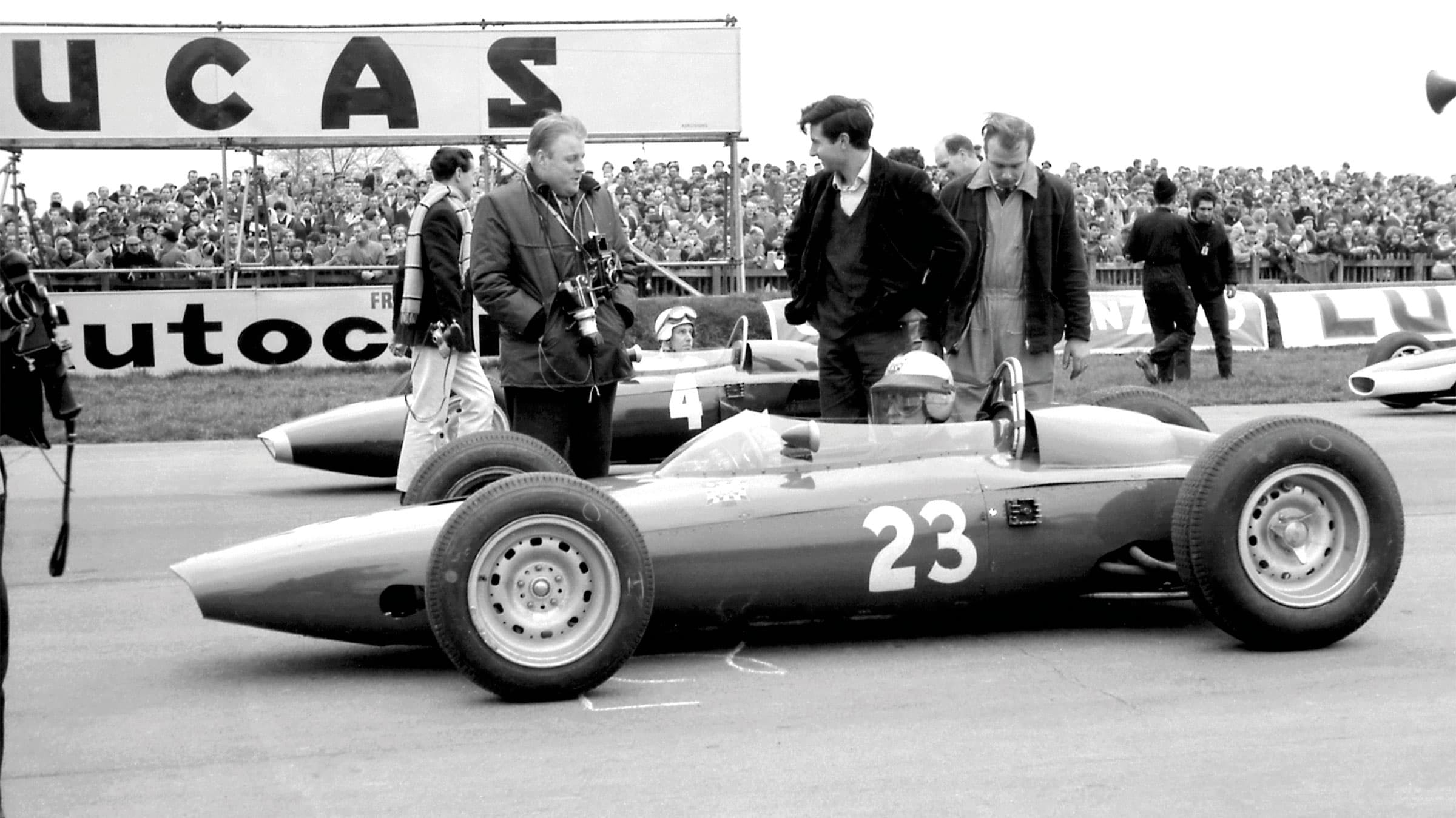
Attwood lines up beside Giancarlo Baghetti at Easter 1964
“I’ve told Charles, ‘Please, never, ever change the track, never let anyone make you change this great circuit.’ The speeds the current drivers are doing round there are so much faster than in my era. I watch these guys, the Le Mans winners. They’re so precise, so fast, not all over the grass.It’s impressive and beautiful to see.”
Evergreen Attwood, now in his eighties, has declared he will continue to race at the Revival for as long as he is invited.
Nick Mason
Nick Mason brought two of his cars to the first Festival of Speed in 1993: his Ferrari GTO and his V16 BRM. Over the past 30 years the Pink Floyd drummer has been a hugely loyal supporter of both the Festival and the Revival, often sharing his beloved GTO with some legendary professional drivers at the circuit.
“I know a lot of older enthusiasts came specially to see the BRM,” he says. “It had that effect on people. I don’t remember much about taking the car up the hill except that I got to the finish line which was a triumph in itself. The V16 was unbelievably complicated.
“The Ferrari GTO was great, such a good car for that sort of event. Those GT cars had been competitive at the circuit and you could drive them there and back on the road. With a hillclimb you take what you’re given and Goodwood is quite fast. Some of it is deceptive. You think the flint wall would be the most alarming bit, but the corner that catches everyone out is Molecomb. All sorts who should know better have had accidents there.”
Mason is one of a few who have driven the Auto Union Grand Prix car up the Festival hill, an experience he savours to this day.

Opportunity of a lifetime… Nick Mason driving an Auto Union at the 2013 Festival of Speed
Getty Images
“I never expected to be allowed to drive that car. Audi knew I had experience of driving and racing old cars and they were worried that the ‘young Turks’, the Audi team drivers, were too used to rev limiters and would destroy the cars. If they’d offered the drive to a journalist, they told me, then they would have pleased only one of them and annoyed 20 others.
“The Festival of Speed has changed just as the world, and all sports events, have changed but Charles Richmond continues to immerse people in the whole motor sport experience and that’s what we all love about it.”
Sir Jackie Stewart
Triple world champion Sir Jackie Stewart first went to Goodwood in 1953 to watch his brother Jimmy race an Ecurie Ecosse C-type. Jimmy won his race that day and little did Jackie know that years later he would be back at Goodwood for a test with Ken Tyrrell.
“It was the first English circuit I’d been to and being there with my brother was fantastic,” he remembers. “I got into the pits and the paddock, collected so many autographs. Every time I go to Goodwood now I think about those days and, of course, the day that changed my life in January 1964 when Ken Tyrrell gave me a test in a Formula 3 Cooper.
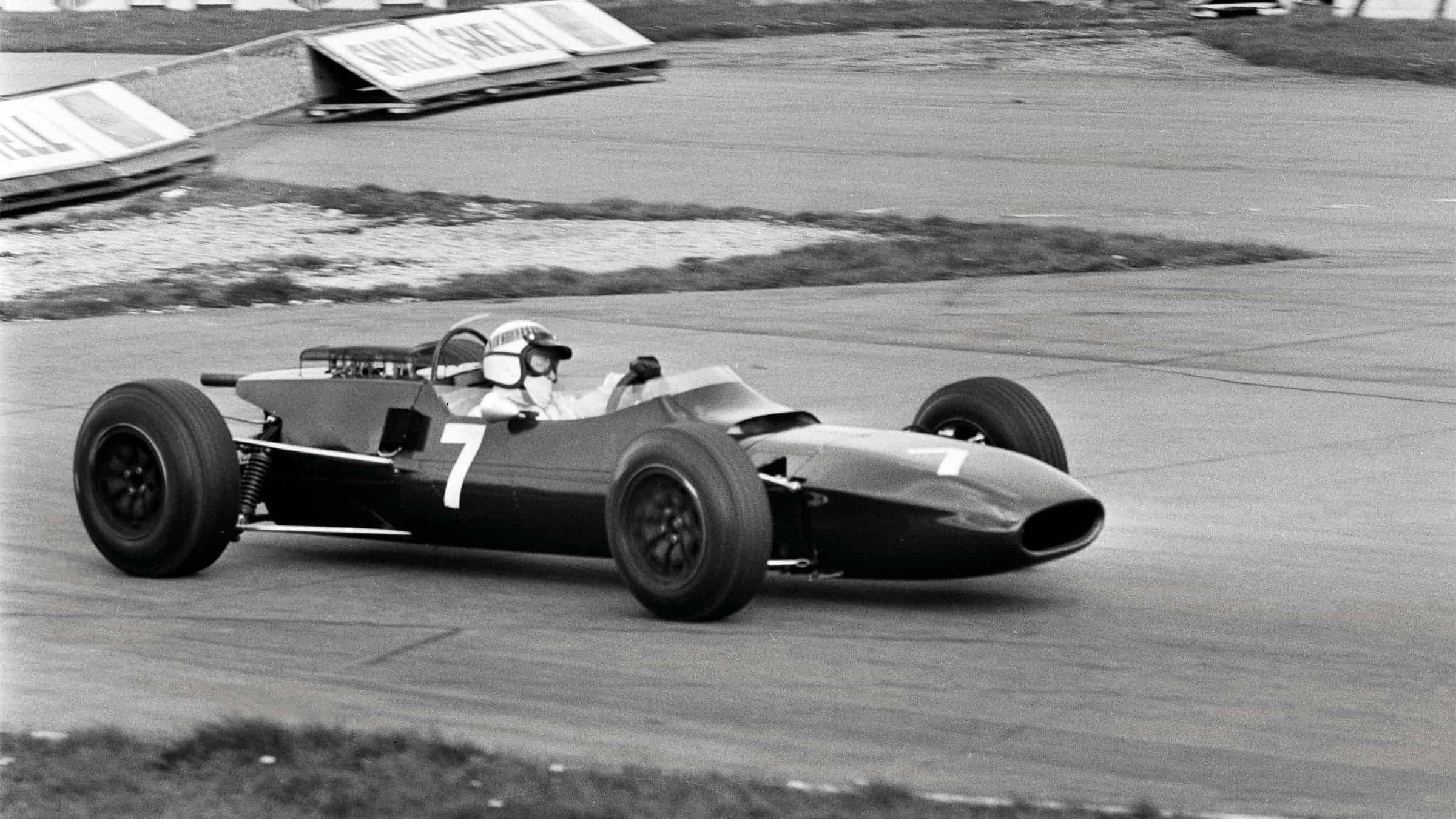
The final international race at Goodwood was the Sunday Mirror Trophy for Formula 2 cars, April 11, 1966. Jackie Stewart was there with Tyrrell Racing
Getty Images
“The track manager Robin McKay had seen me set a new lap record in 1963 and he’d told Ken that he should give me a trial run. So I went down to Goodwood and it went well. I beat the time Bruce McLaren had done earlier. John Cooper told Ken, ‘You need to sign this lad,’ so I knew I’d made an impression.”
In 1965 Jackie was back at Goodwood, this time as Graham Hill’s team-mate at BRM for the International Trophy on Easter Monday.
“In the race it was close at the front, Clark, Hill and I battling for the lead, but the camshaft failed. The best part of that day was sharing the lap record with Jim Clark: 1min 20.4sec, and that record stands for ever as it was the last Formula 1 race there. The circuit has played an important part in my racing career.”
Gordon Murray
“When I heard about the Festival of Speed in 1993 I told George Harrison about it. We decided to drive down there in our Rockets, the first time the Rocket would be seen in action in public,” remembers Gordon Murray, whose McLaren F1 also made its competitive debut at the event. Since then Murray has launched both his T.50 and T.33 supercars at the circuit.
“Back in ’93 Charles had said we could park the Rockets behind the House. We bumped into him and George said he’d love to drive up the hill. Charles said he could make that happen, so George went up in his Rocket and he absolutely loved it.”
The McLaren F1, driven by Jonathan Palmer, was second-fastest car, beaten only by a Surtees TS20 Formula 1 car.
“I was watching and I remember thinking, ‘That looks quick, I just hope he keeps it on the black stuff,’” says Murray. “Jonathan had done a lot of the high-speed development work in the F1 so I wanted him in the car.”
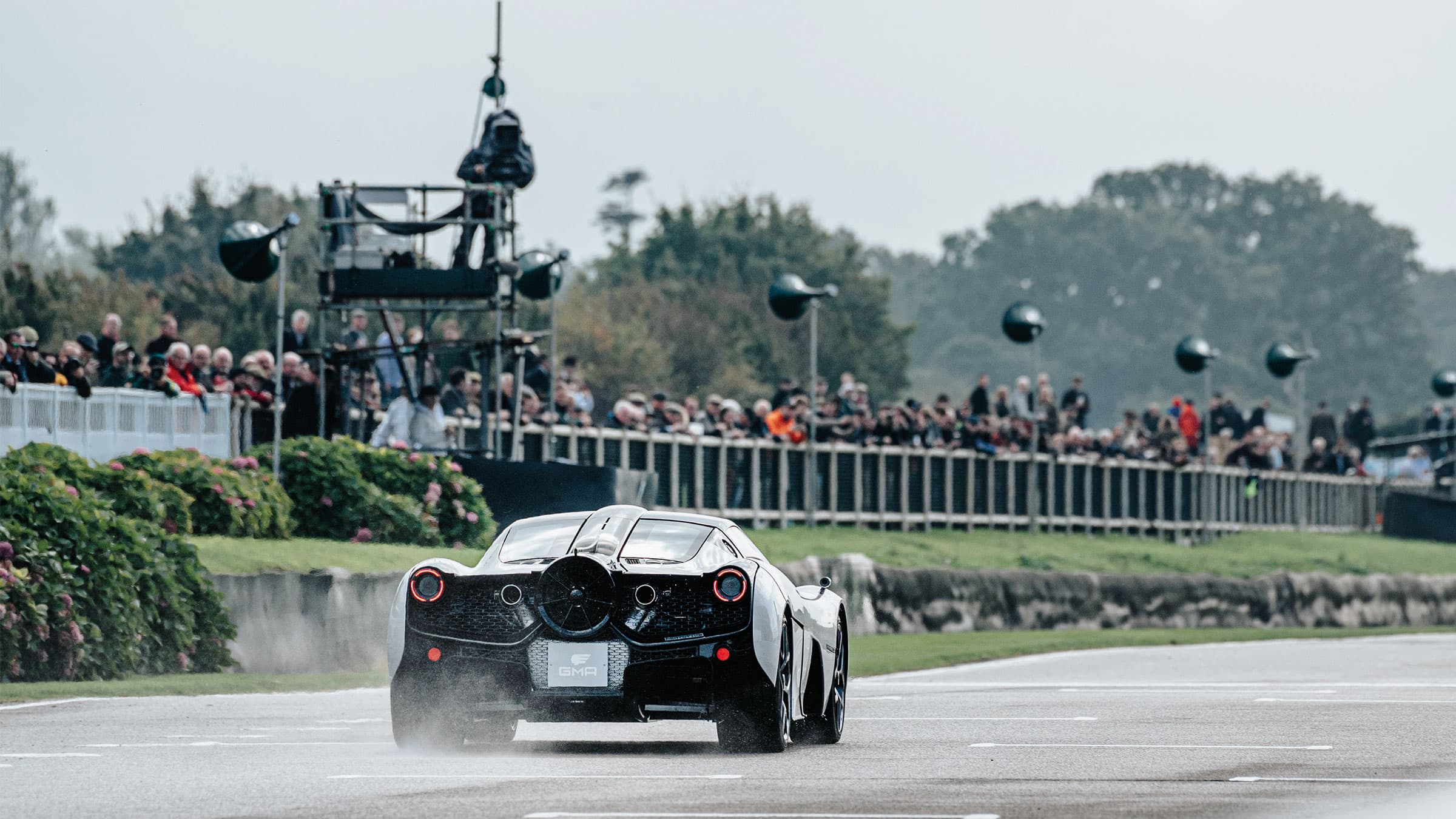
The Gordon Murray T.50 made its public debut at the Members’ Meeting in 2021
Gordon Murray came to the UK in 1969 but as a teen in South Africa he could draw all the UK and European circuits and name the corners, and knew about Goodwood’s history.
“The Festival blew everyone away. What really jumped off the page for me that first year was how close you could get to the cars and bikes, and walk into the paddock shelters, speak to the people, nobody hassled you. There were no barriers, no places you weren’t allowed. That really works for me, and the pleasure of all that never goes away. The Festival brings the fans closer to the cars, the bikes, the drivers and riders than anywhere else. That’s very special. For me, Goodwood is it, and the Revival is the best day’s motor racing in the world.”
Derek Bell
Derek Bell was brought up on a farm just a few miles from Goodwood and, as a member of Bognor Regis Motor Club, he volunteered as a marshal at the circuit. Throughout his teens and early twenties he’d dreamed of competing there, and eventually fulfilled his ambition.
“On March 14, 1964 my mate John Penfold and I drove our Lotus 7 to the circuit where I’d entered a five-lap handicap race for sports cars,” remembers Derek. “I’d never raced before, there was rain, the Lotus wasn’t prepared for racing, but I made a good start. I never saw anyone else, ahead or behind, and won by 20sec. I still have the prize, an engraved folding alarm clock, to remind me of that day.”

A Formula 3 screamathon amid the daffs – the Derek Bell Cup at the 73rd Goodwood Members’ Meeting, 2015
That victory was the first tentative step on a ladder that led to success in Formula 3 and Formula 2 and by 1968 he was on the grid for the Italian Grand Prix in a Ferrari. “Unbelievable – just four years after my first ever race.”
Derek moved on to sports cars, winning the World Sportscar Championship twice with five wins at Le Mans and three at the Daytona 24 Hours. “Goodwood has been such an important place for me, growing up so close to the circuit, and racing at the early Revivals was an incredible experience, bringing back many memories. It’s a wonderful track, exactly as it was when I started out. A true classic circuit.”
Damon Hill
Damon Hill took part in the first Festival of Speed and raced both a bike and a car at the first Revival, triggering memories of his father Graham who raced at Goodwood so successfully in the 1950s and ’60s.
“It was Barry Sheene’s fault that I went to the first Revival,” says Damon. “He tended to drag you into situations that you ought not to be in. He found me a competitive bike, a 500cc Manx Norton, and said, ‘Come on, it will be fun, let’s have a go.’ I agreed as long as I could start at the back of the grid and ride round, not racing anybody. I hadn’t raced a bike for 15 years but I loved being back on one and felt a lot safer than I did in the Ferrari GTO I drove that weekend. I never saw Barry in the race as he was up at the front but he was happy that I’d had a go.”
Damon was racing for Jordan in Formula 1 that year, had won the Belgian Grand Prix in August and came to the Revival straight from the Italian Grand Prix at Monza.
“Eddie was very supportive about me doing the bike race. I think he’d have been quite happy if I’d fallen off and broken my arm, then he could have replaced me, which he was always trying to do that year,” he says, laughing. “Nick Mason volunteered me for the drive in his Ferrari GTO. I’d seen images of my dad racing the car. There was something majestic about those GT cars. In the Tourist Trophy race I remember looking in my mirrors and thinking, ‘That’s Stirling Moss!’ Amazing.
“I thought the Revival was such a brilliant idea, to go back in time, and it really brings that era of racing alive.”
Last year the Revival celebrated Graham Hill’s 1962 world championship, with Damon taking the wheel of his father’s BRM. He drove Graham’s John Coombs Jaguar Mark 1 at the first Festival of Speed and remains a patron.
